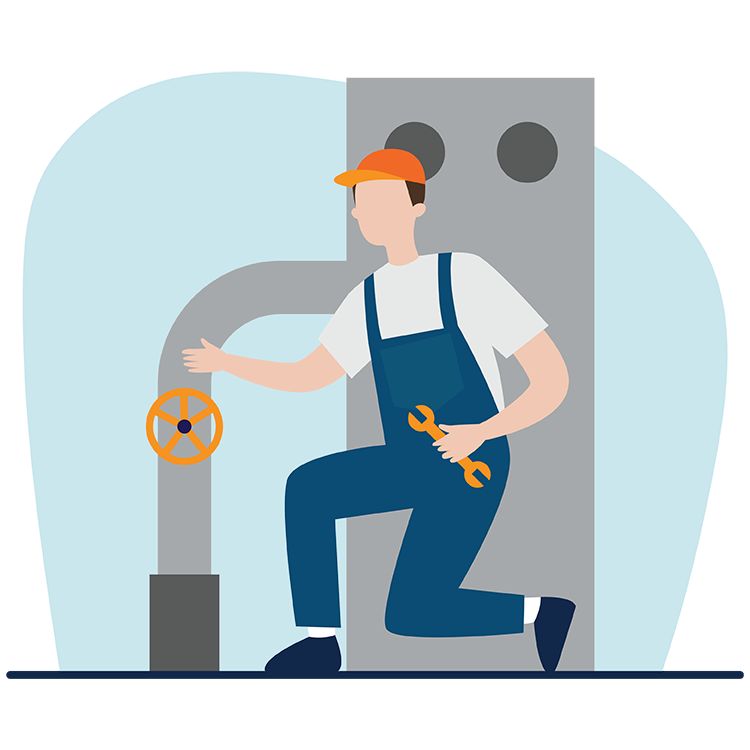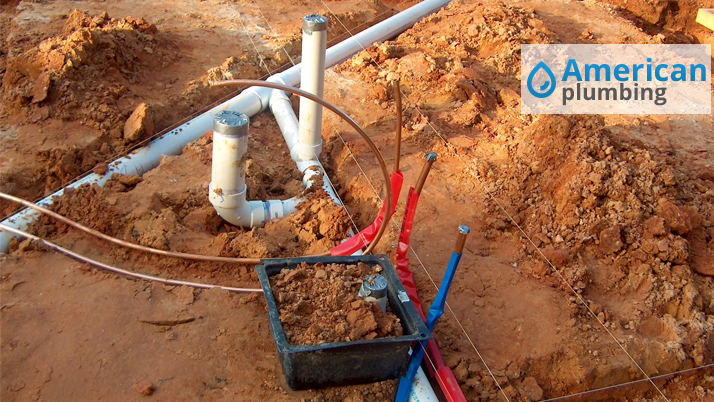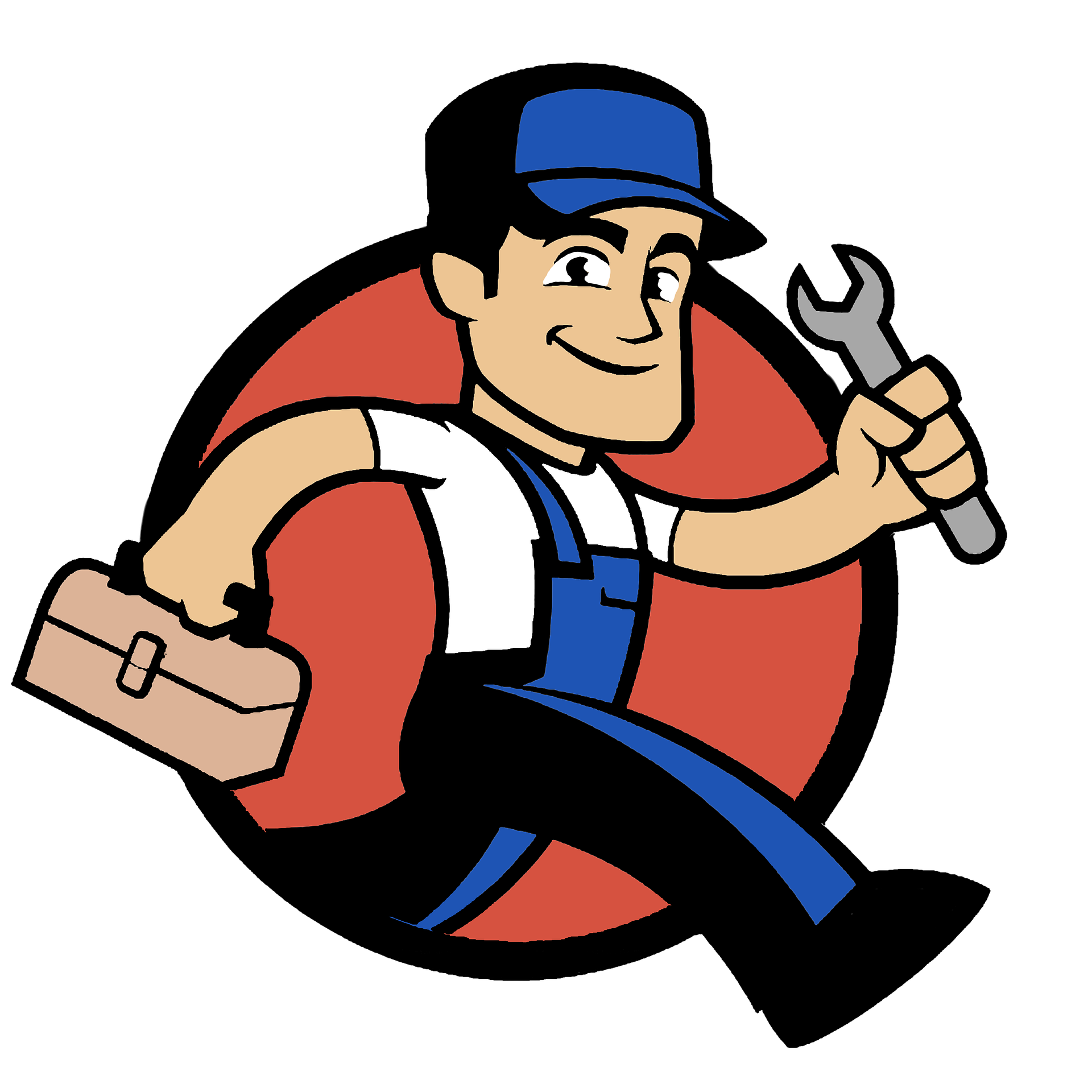Exactly how to Change a Toilet
How to Take Care Of Low Water Stress and Irregular Heating ==========================================================
Having problem with low water pressure and uneven heating in your house? Do not fret, you're not the only one. These usual pipes and heating and cooling issues can be incredibly irritating, but fortunately exists are some easy actions you can require to obtain things back on course. From evaluating for leaks and mineral buildup to readjusting your water pressure regulator and flushing the water heater, we'll cover all the fundamentals. And when it comes to uneven heating, we'll check out stabilizing your home's heater and making certain appropriate airflow. Stay tuned – you're about to learn some valuable tips that can make a genuine difference.
Key Takeaways
- Look for clogged up pipelines, faulty stress regulators, and aging pipes systems that can create low water stress.
- Adjust the water stress regulatory authority and flush the hot water heater to improve water circulation.
- Tidy showerheads, taps, and replace filters to get rid of mineral accumulation and bring back water stress.
- Mount a tankless hot water heater to enhance effectiveness and provide consistent warm water stress.
- Bleed air pockets from radiators, readjust thermostats, and make sure correct insulation to balance home heating.
Usual Causes of Low Tide Pressure
If you're experiencing low tide stress, the offender could be one of a number of typical reasons. Blocked pipes, a damaged stress regulatory authority, or even an issue with your major water line can all contribute to lowered water stress in your house.
One of the most common reasons for low water pressure is pipeline deterioration. In time, the pipelines in your house can become clogged with mineral accumulation and even corrosion, limiting the circulation of water and minimizing pressure. This is especially typical in older homes with outdated pipes.
Another potential cause is the design of your fixtures. Particular types of faucets, showerheads, and other water-using home appliances can be much more susceptible to low stress than others. If you have actually just recently replaced a fixture, it's worth examining to see if the new one is compatible with your home's water pressure.
Attending to these common problems can assist restore the water stress in your home and warranty that you have the constant, high-grade water circulation you require.
Checking for Leakages and Blockages
Before dealing with other prospective causes, you'll wish to check your pipes system for any leaks or obstructions that might be restricting water flow.
Beginning by evaluating visible pipes, faucets, and components for any signs of dripping or wetness. You can likewise attempt the soak examination – switch off all water-using devices and monitor your water meter; if it's still relocating, you've likely obtained a leakage somewhere.
Next off, use a garden hose pipe to eliminate your major water line, which might be clogged with particles. If that does not aid, you might need to snake the line or call a plumbing for more advanced leak detection and blockage recognition.
Hidden leakages behind walls or underground can be harder to situate yet are typically the offender for reduced stress. With some mindful assessment and a little pipes expertise, you can get to the root of the issue and begin appreciating far better water circulation throughout your home.
Changing the Water Pressure Regulatory Authority
If your home's water pressure is too reduced, the primary step is to situate the water pressure regulatory authority.
This device controls the pressure of the water entering your home.
As soon as you've discovered the regulatory authority, you can adjust the setting to enhance the water pressure.
Find the Regulatory authority
To locate the water stress regulatory authority, you'll typically find it near the primary water shut-off shutoff, typically in a basement or crawl space.
It's typically a round tool, regarding the dimension of a soft drink can, and it may be partly hidden behind pipes or insulation. Seek a brass or plastic suitable with a threaded dial or change screw on the top.
The regulator's job is to keep a regular water pressure throughout your home, typically around 40-60 psi. If the stress is too high, it can trigger leakages and damage your pipes. If it's too low, you'll experience low water circulation and reduced home appliance efficiency.
To inspect the regulatory authority, switch on a faucet and utilize a water stress scale to determine the flow price. If the stress is outside the recommended array, you can adjust the regulator by transforming the dial clockwise to increase stress or counterclockwise to reduce it.
Make little changes and retest till you attain the perfect stress.
Adjust the Setting
Once you have actually found the water pressure regulatory authority, readjusting it to the correct setup is the following step in resolving low water stress. Transform the change dial or screw clockwise to enhance the pressure, and counterclockwise to decrease it, making little increments and evaluating the results till you attain the preferred stress variety of 40-60 psi.
When adjusting the stress, be mindful of the optimal temperature setups for your water heater. Way too much pressure can create problems with the heater and result in leaks, while too little pressure might cause poor warm water circulation.
Usage mild pressure change strategies, observing the adjustments and tweak the regulator until you find the wonderful place that provides consistent, sufficient water stress throughout your home.
With a little experimentation, you need to have the ability to settle the low water pressure trouble and take pleasure in the advantages of properly regulated water circulation.
Purging the Hot Water Heater
Regular flushing of your hot water heater can assist ensure effective procedure and keep optimal water stress throughout your home.
With time, sediment can build up in the bottom of the tank, which can restrict water circulation and minimize the heating unit's effectiveness.
To flush your hot water heater, you'll require to turn off the power and supply of water, connect a yard hose to the drain shutoff, and let the water run until it runs clear. This procedure gets rid of the built up sediment and helps improve water flow.
Make certain to follow the producer's directions carefully, and think about scheduling normal hot water heater upkeep to avoid future problems.
Staying on top of this basic task can go a lengthy means in dealing with low water stress issues in your house.
Cleansing the Showerhead and Faucets
If your showerhead or faucets are clogged with mineral buildup, that could be the culprit behind your low tide stress.
Beginning by taking apart these components and providing an excellent scrub to eliminate any scale or debris.
This should aid restore the water flow and get your stress back up.
Dismantle and Scrub
Although the water pressure in your home might have lessened, you can conveniently correct the issue by disassembling and extensively scrubbing your showerhead and faucets.
Beginning by unscrewing the showerhead and detaching it from the wall surface. Once gotten rid of, examine the showerhead for any kind of mineral build-up or debris that can be restricting the water flow. Make use of a small brush or toothpick to gently clean the showerhead's openings, guaranteeing they're devoid of any type of obstructions.
Next, transform your attention to the taps. Unscrew the tap handles and get rid of the stems to access the internal operations. Saturate the parts in a vinegar remedy to liquify any kind of mineral deposits, then scrub them clean with a small brush.
Do not neglect to check the water filter, as clogged up or used filters can also contribute to low tide stress. Consider replacing the filter or the whole showerhead if the problem persists.
Descale Mineral Accumulation
With time, natural resource can develop in your showerhead and faucets, slowly obstructing the openings and restricting the water circulation. To battle this problem, you'll need to descale and completely tidy these components.
Begin by loosening the showerhead and faucet aerators, then saturate them in a mix of vinegar and water for thirty minutes. This simple mineral removal strategy will certainly aid dissolve the limescale and residue.
If the build-up is serious, you may need to make use of a much more potent descaling service. You can find specific descaling items at your local equipment shop. Follow the instructions thoroughly, and make sure to wash the components completely after that.
Conversely, you can set up a water softener, which will certainly protect against future mineral accumulation by eliminating calcium and magnesium from your supply of water.
Normal maintenance and cleansing of your plumbing components will ensure suitable water pressure and an even, constant water circulation throughout your home.
Upgrading the Water Furnace

Updating your water furnace can substantially boost low tide pressure by offering an extra effective and efficient source of hot water.
Think about mounting a tankless hot water heater, which heats up water as needed as opposed to storing it in a storage tank. Tankless systems are much more energy-efficient, as they do not waste power maintaining a big container of water hot at all times. They additionally supply a continual supply of hot water, ensuring you never ever run out mid-shower.
When selecting a tankless system, search for one with a high circulation rate to ensure adequate water pressure. You may also require to upgrade your home's plumbing to fit the higher flow rate.
The preliminary financial investment might be more than a standard tank-based system, yet the lasting energy cost savings and boosted water stress can make it a beneficial upgrade.
Collaborate with a qualified plumbing professional to ensure your new water heater is correctly sized and mounted for your home's requirements.
Stabilizing the Home Heating Unit
Proper balancing of your home's heating system can go a long way in resolving low water stress. Confirm your radiators or wall units are devoid of air pockets, as trapped air lowers the system's performance and concessions water circulation.
Hemorrhage each radiator consistently to launch any kind of accumulated air, restoring smooth water circulation throughout the home.

Next off, readjust your thermostat setups to guarantee also heating. Lower the temperature in spaces that are also hot and enhance it in cooler areas. This will certainly help the boiler preserve a constant water stress, delivering warmth where it's required most.
Consider upgrading to a wise thermostat that can immediately change temperatures based upon usage patterns and exterior conditions.
Additionally, check for any shut or partly shut shutoffs that may be limiting water flow. Confirm all shutoffs are totally open, enabling the heated water to flow freely.
Stabilizing the system might need the knowledge of an expert, yet the payoff in improved water pressure and heating efficiency will be well worth the financial investment.
Shielding Pipelines and Ductwork
Shielding your pipes and ductwork can make a huge distinction in improving your home's energy performance.
By lowering warmth loss and gain, you'll keep your home heating and cooling down systems running more effectively.
Have a look at your insulation – upgrading it could be a simple means to conserve power and money.
Improving Insulation Efficiency
Guaranteeing your pipelines and ductwork are properly insulated can go a lengthy method in improving the overall effectiveness of your home's pipes and a/c systems.
When it pertains to improving insulation performance, you'll wish to focus on making use of the ideal insulation products.
Foam pipe insulation, for example, can give outstanding thermal protection for your pipes, protecting against warm loss and maintaining water temperature.
Similarly, air duct insulation aids decrease energy loss via your ductwork, maintaining warmed or cooled air where it belongs – in your living spaces, not getting away right into the attic room or crawlspace.
Decreasing Warm Loss and Gain
In addition to improving your home's overall energy performance, effectively shielding your pipelines and ductwork can likewise help you reduce warmth loss and gain, keeping your home comfortable year-round.
Uninsulated pipelines can result in considerable warm transfer, resulting in thrown away power and uneven home heating or air conditioning. By shielding your hot water pipelines, you'll maintain more of that precious heat, minimizing the tons on your water heater. Similarly, shielding your ductwork protects against warmth from escaping the system, ensuring the conditioned air reaches its designated destination. Seek high-R-value insulation materials that provide optimal warmth retention.
Proper insulation also assists reduce warmth gain, maintaining undesirable heat out of your home during the summertime. This heat retention in your pipes and ducts translates to lower power costs and a much more consistent interior environment.
With a little time and effort, you can enhance your home's general warm loss and gain, improving both comfort and effectiveness.
Repairing Irregular Home Heating Issues
If your home is experiencing uneven home heating, the culprit can be a problem with your home's air blood circulation. Inadequate airflow can result in particular rooms really feeling colder or hotter than others, leaving you and your family uneasy.
One possible service is radiator balancing. This involves readjusting the valves on your radiators to ensure equivalent circulation of warm throughout your home.
Another alternative is thermostat calibration. If your thermostat isn't properly reading the temperature, it can't effectively regulate the heating system, resulting in unequal heating. You can try recalibrating the thermostat or replacing it completely.
Additionally, look for any clogs or obstructions that might be hampering air flow, such as furnishings or drapes placed too close to vents. Appropriate air flow is vital to achieving constant home heating.
Tips for Keeping Optimal Water Stress and Heating
Keeping constant water stress and efficient heating throughout your home needs a multi-pronged technique.
Start by evaluating your plumbing system for any type of potential blockages or leaks that could be limiting water flow. Furthermore, inspect your home's heating tools, making certain elements like the heating system filter are tidy and working effectively.

Next off, consider carrying out water-saving strategies to boost your use. Set up low-flow showerheads and tap aerators to reduce water intake without sacrificing performance. Routinely clear out debris build-up in your water heater to preserve its effectiveness.
For persistent low-pressure problems, look into pressure-boosting devices like inline water pumps or whole-house stress regulatory authorities. These can efficiently boost water circulation to problem locations.
Often Asked Concerns
Exactly how Do I Clean My Water Softener?
To cleanse your water softener, you'll require to carry out normal upkeep on the resin bed.
First, regenerate the softener by running a full cycle. plumbers near me
Then, make use of a resin bed cleaner to eliminate any kind of buildup or pollutants. Make sure to comply with the manufacturer's guidelines carefully.
With correct water conditioner maintenance, you can keep your material tidy and ensure your system continues to function efficiently.
What Is the most effective Way to Descale My Kettle?
To descale your pot, attempt utilizing an industrial descaling solution.
Just fill up the pot with the descaling solution and allow it sit for a while prior to boiling it. This will assist damage down any type of mineral build-up inside the pot.
You can additionally attempt using a mix of white vinegar and water.
Routine pot upkeep is essential to maintaining it in top form and ensuring your water warms up rapidly and uniformly.
Exactly how Do I Stop My Pipes From Cold?
To avoid your pipes from freezing, it's important to set up proper pipeline insulation.
Ensure to wrap any type of unwrapped pipes with insulation, especially in areas like the attic, crawl space, or exterior walls. This will assist trap heat and protect against the water inside from cold.
In addition, permit a drip of water to go through your taps throughout extremely winter to maintain the water relocating and less most likely to freeze.
Keeping your home's temperature level regular can also help prevent frozen pipelines.
Can I Set Up a Water Stress Booster Myself?
Certain, you can mount a water pressure booster on your own, however it's a complicated task that needs some pipes knowledge.
The booster will raise the water pressure in your home, however you'll need to properly size and install it to avoid any concerns.
Ensure to switch off the main water supply, and comply with the manufacturer's guidelines thoroughly.
If you're not comfortable with do it yourself pipes, it's ideal to hire an expert to manage the water pressure booster installation.
What Is the Suitable Hot Water Heater Temperature Setting?
The optimal water heater temperature level setup is normally in between 120 F and 140 F. This range provides a great balance in between water heater effectiveness and secure temperature level.
Setting your hot water heater any higher than 140 F can increase energy costs and position a hot danger, specifically for little ones and older grownups.
Final thought
To maintain optimal water pressure and home heating, on a regular basis evaluate your pipes and heating and cooling systems.
Attend to any kind of leakages or blockages, change the water pressure regulator, and purge the hot water heater.
Assurance correct airflow by bleeding radiators and looking for blockages.
Shield pipelines and ductwork to improve effectiveness.
With a little DIY maintenance, you can enhance the comfort and energy-efficiency of your home.